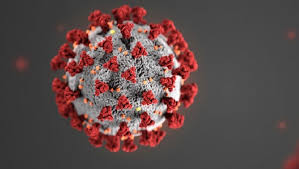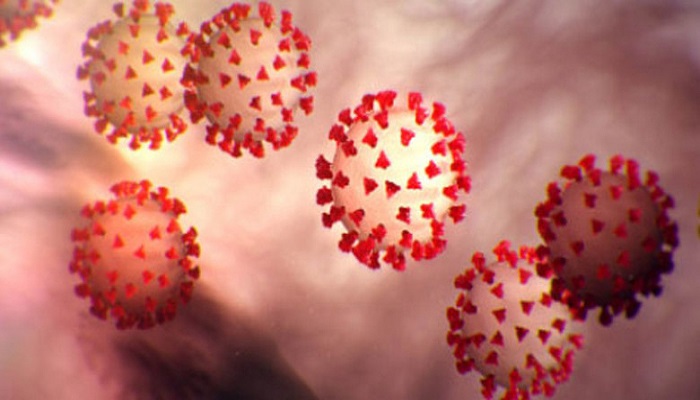Novel Coronavirus outbreak (COVID-19) was initially reported in Wuhan city of Hubei province, China. And now, it has been declared as pandemic which is spreading and affecting men, women, elders and young of all age groups. As suggested by the World Health Organization (WHO), viral diseases continue to emerge and pose a serious threat and concern to public health.
According to the latest (April 3, 2020) data by World Health Organization (WHO), the statistics of COVID-19 pandemic are:
- Confirmed cases of COVID-19 infection: 976, 246
- Conferred deaths worldwide: 50, 489
- Countries/ areas/ territories affected: 207
Before this coronavirus outbreak, several other viral epidemics have been reported. These were severe acute respiratory syndrome coronavirus (SARS-CoV) in year 2002 to 2003, and H1N1 influenza in year 2009. In 2012, the gulf countries have the outbreak of the Middle East respiratory syndrome coronavirus (MERS-CoV).
Novel Coronavirus Etiology
Research discloses that the coronavirus pandemic is associated to or caused by novel Coronavirus strain which belongs to Coronaviridae family. The CoVs genome consists of positive strand RNA. These viruses have characteristic crown-like spikes of glycoprotein molecules on the envelope (in latin coronam means crown). The CoVs are very contagious and have become the major pathogens of upper respiratory tract infection. Therefore, the signs and symptoms of coronavirus infection involve flu, cough, fever and pneumonia like symptoms in severe cases.
CoVs are a large family of single-stranded RNA viruses (+ssRNA). The Coronaviridae family comprises of four genus some. Some have animal origin or host. These viruses can cross species barriers and can cause, in humans, illness ranging from the common cold to more severe respiratory tract infections.

It is assumed that the novel CoV-19 strain has probably originated from bats and then moving into other mammalian hosts before reaching humans. However, there are speculations about the exact origin of COVID-19.
Novel coronavirus airborne or not?
There are certain misconceptions or we can say misunderstandings about this virus. These include temperature sensitivity of CoVs, mode of transmission, incubation period and even signs and symptoms. One of these is that whether the Coronavirus is airborne or not.
According to the World Health Organization (WHO), the virus associated to COVID-19 is mostly transmitted through droplets produced when an infected person coughs, sneezes, or speaks. These droplets further spread while shaking hand and if you are standing within 1 meter of the infected person. Mouth, nose and eyes are transmission route of these viruses. However, it has been suggested that the virus-containing droplets are too heavy to hang in the air. Thus, they rapidly fall on floors or surfaces where it may stay for considerable time duration.

At higher temperature of 30°C or more the time of persistence is shorter. Veterinary corona viruses may persist even longer for 28 days. Contamination of frequently touched surfaces in healthcare settings is therefore a potential source of viral transmission.
Another observational study describes that people tend to touch their face with their own hands on average 23 times per hour and they tend to touch their skin (56%), mouth (36%), nose (31%) and eyes (31%).
Study performed at the University Of Nebraska Medical Center found extensive evidence of viral RNA in isolation rooms of patients having COVID-19 infection. Researchers have found viral RNA molecules at intimate surfaces as well as in air samplers within 2 meters distance from the patients. The presence of the RNA indicates virus may also spread via aerosols in addition to the sneezing or coughing of the patient.
Novel coronavirus persistence on surfaces
Study published in Journal of Hospital Infection suggests that human corona viruses may remain infectious on inanimate surfaces at room temperature for as long as 9 days. The viral load of coronavirus on inanimate surfaces is still unclear. However, during this pandemic situation it seems plausible to reduce the viral load on surfaces by disinfection.
The analysis of 22 studies suggests that human coronavirus including COVID-19 as well as Severe Acute Respiratory Syndrome (SARS) coronavirus, Middle East Respiratory Syndrome (MERS) coronavirus or endemic human coronavirus (HCoV) can endure and persist on inanimate surfaces like metal, glass or plastic for up to 9 days. Thus, it is essential to disinfect the frequently touched surfaces.
Summary
While some of the studies suggest that novel coronavirus is airborne while some do not agree. According to World Health Organization (WHO),
‘The aerosol transmission of novel coronavirus may be possible in particular circumstances and settings that produce aerosols,” for instance when severely ailing patients are intubated with a breathing tube. On the other hand, the WHO experts say, an analysis of more than 75,000 coronavirus cases in China suggested no cases of airborne transmission.’’
Either way, the major mode of transmission is sneezing and coughing droplets. Thus, staying close to the infected person or direct contact should be avoided.
At the movement, all the therapeutic strategies to deal with the infection are only supportive. Governments and health care organizations are working tirelessly to establish countermeasures to prevent devastating effects as much as possible. Preventive strategy aims at reducing transmission in the community and is the best possible solution. Aggressive isolation measures have led to a progressive reduction of infections. Thus, the best possible measure is to stay isolated, stay home and take all precautionary measures to stay safe and to keep others safe.


I wonder why full body suit when the route of infection is mouth, eyes and nose? They can always discard or disinfect after wards, even take disinfecting bath.
Considering the current emergency or pandemic situation, doctors are at highest risks of getting infection while treating patients. And taking disinfecting bath every time is not that easy. That’s why WHO recommends protective kits for front line workers.
Hi! I’ve been following your website for a while now and finally got the courage to go
ahead and give you a shout out from Kingwood Tx!
Just wanted to mention keep up the good job!